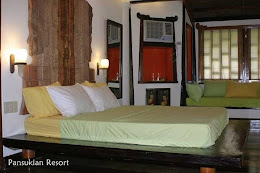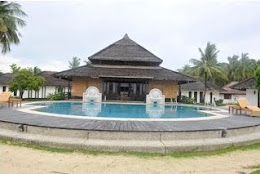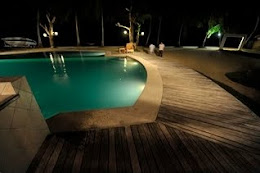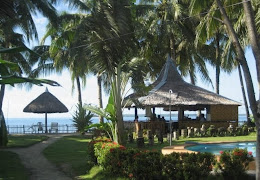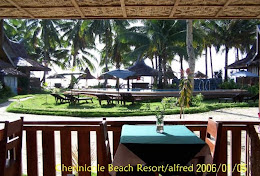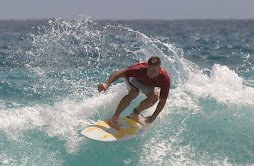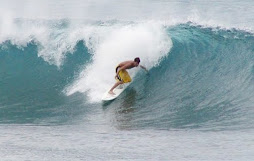Siargao Island is the best surfing destination in the Philippines located at the backdrop of the Surigao del Norte paradise. Great and mighty waves from the the Pacific Ocean, this island presents itself as the Philippine alternative to Oahu and Tahiti.
Siargao Island contains the largest
mangrove forest reserves in
Mindanao, at
Del Carmen. Long stretches of
wetlands indicate a potential for commercial
seaweed propagation. Siargao Island is greatly influenced by the winds and currents coming uninterrupted from the
Pacific Ocean, intensified by the Mindanao current running westward through the Siargao Strait.
Offshore, a classic tropical island lies protected within its surrounding
coral reef with dozens of
coconut palms dressed in the center circle of the island. Off to the right, well within the massive coastal reef, lies a shining white
sand bar, (Pansukian, or Naked island) some 200 meters long. The
tide of Siargao is
diurnal with tidal curves typically present, especially on the east coast of the island.

The Island's Pacific-facing reefs are situated on the edge of the
Philippine Trench, and the extremely deep offshore waters assure the ocean swells have undiluted power when they encounter the many coral and rock reefs. Siargao has excellent
surfing conditions, particularly during the southwest "habagat"
monsoon from August to November, when the
prevailing wind is offshore.
In the past , going to Siargao is by domestic flights from Manila to Surigao, and then by boat to Siargao Island. Beginning March 4 however, the easiest, fastest, most convinient way to the island is now by flying Cebu Pacific direct to Siargao Island via Cebu.1
Cloud 9
One of the best known surfing waves on Siargao and the
Philippines, with a worldwide reputation for thick, hollow
tubes is "Cloud 9"
[citation needed]. This right-breaking reef wave is the site of the annual Siargao Cup, a domestic and international surfing competition sponsored by the provincial government of
Surigao del Norte.
The wave was discovered by travelling surfers in the late 1980s. It was named and made famous by American photographer John S. Callahan, who published the first major feature on Siargao Island in the United States- based
Surfer magazine in March 1993, and hundreds of his photos in many other books and magazines since his first visit in 1992. Callahan has put the island on the international map and has drawn thousands of surfers and tourists to Siargao. Cloud 9 also has a reputation for being a relatively cheap destination for surfers with many cheap accommodations and restaurants and bars to choose from.
There are several other quality waves on Siargao and nearby islands, but Cloud 9 has received more publicity than any other, indeed in the Philippines as a whole. It is the only wave easily accessible without a boat, leading to overcrowding and the nickname of "Crowd 9" among surfers. Eager foreign and locally owned accommodation and tourist facilities have profited from the magazine publicity and the influx of visitors drawn by the annual Siargao Cup competition in September.
Siargao is well known as "The Surfing Capital of the Philippines" with a reputation among surfers within the
Philippines and the International scene.
Eddie Florano has also written a song called "Surfin' in Siargao" from the 2006 Ukulele World: Acoustic & Power Ukulele compilation album.
Bucas Grande
Go!

 The Island's Pacific-facing reefs are situated on the edge of the Philippine Trench, and the extremely deep offshore waters assure the ocean swells have undiluted power when they encounter the many coral and rock reefs. Siargao has excellent surfing conditions, particularly during the southwest "habagat" monsoon from August to November, when the prevailing wind is offshore.
The Island's Pacific-facing reefs are situated on the edge of the Philippine Trench, and the extremely deep offshore waters assure the ocean swells have undiluted power when they encounter the many coral and rock reefs. Siargao has excellent surfing conditions, particularly during the southwest "habagat" monsoon from August to November, when the prevailing wind is offshore.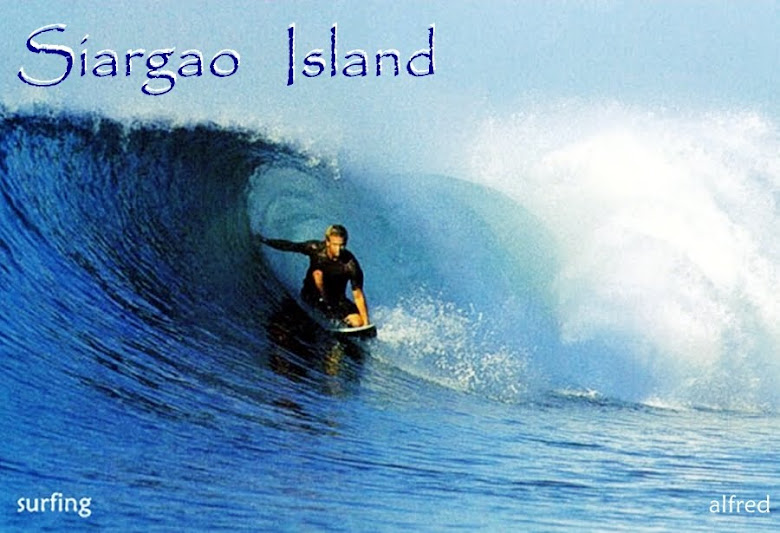









 There are currently no mining activities in Siargao but there are motions to "free" some municipalities in Siargao to cater to mining operations. The island, touted as the surfing capital of the country, was declared a protected area by the Protected Area Management Board (PAMB).
There are currently no mining activities in Siargao but there are motions to "free" some municipalities in Siargao to cater to mining operations. The island, touted as the surfing capital of the country, was declared a protected area by the Protected Area Management Board (PAMB).


